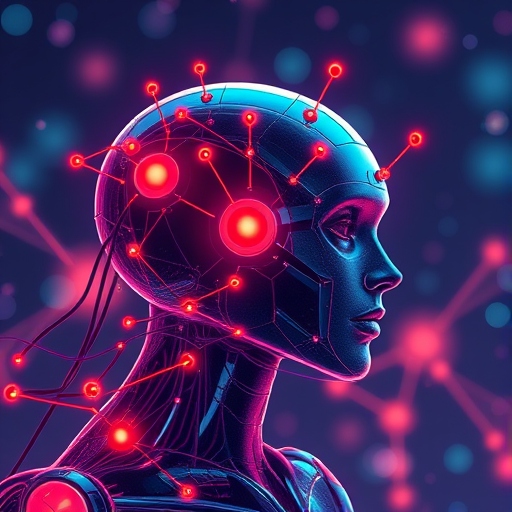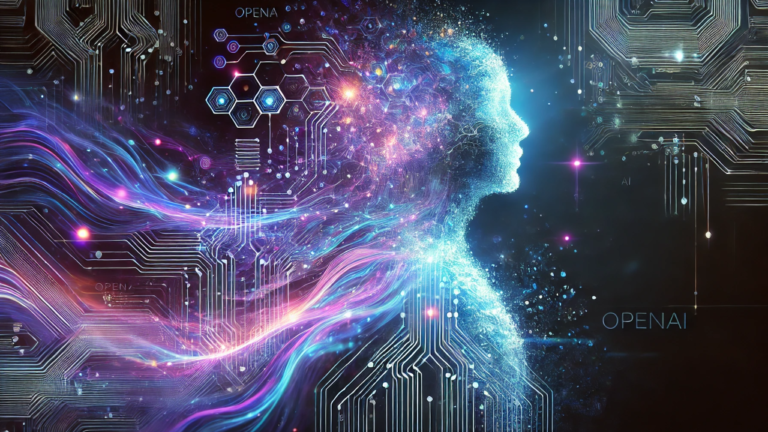
As technology advances at an unprecedented pace, generative AI has emerged as one of the most transformative innovations. Its applications span numerous industries, from healthcare to content creation, but nowhere is its impact more pronounced—and controversial—than in cybersecurity. The question looms large: is generative AI a game-changer for security or a new threat vector that amplifies risk?
In this comprehensive blog, we’ll explore how generative AI influences the cybersecurity landscape, its potential as a defensive powerhouse, and the risks it poses as a tool for cybercriminals.
The Rise of Generative AI: A Brief Overview

Generative AI refers to artificial intelligence systems capable of creating content such as text, images, code, and even realistic simulations. Tools like OpenAI’s ChatGPT and image generators like DALL-E demonstrate its creative prowess. But beyond creation, generative AI models possess powerful pattern recognition, data analysis, and anomaly detection capabilities, making them invaluable in cybersecurity applications.
While the advantages are striking, the very qualities that make generative AI revolutionary also make it a potential weapon in the hands of malicious actors.
Generative AI’s Role in Cybersecurity
Generative AI serves two primary purposes in cybersecurity: defense and attack.
1. Defensive Applications
Generative AI helps organizations enhance their cybersecurity posture by enabling:
- Threat Detection: AI models identify anomalous patterns in vast datasets, flagging potential breaches.
- Incident Response: Generative AI can simulate various attack scenarios, enabling teams to prepare robust defenses.
- Phishing Prevention: AI models generate real-time responses to phishing attempts, safeguarding users.
2. Offensive Exploitation
Cybercriminals are leveraging generative AI for nefarious purposes, including:
- Crafting highly sophisticated phishing emails.
- Automating malware code generation.
- Bypassing traditional security measures by mimicking legitimate behavior.
Advantages of Generative AI in Cybersecurity
Generative AI’s capabilities offer profound benefits to cybersecurity, revolutionizing the way organizations combat threats.
1. Enhanced Threat Intelligence
Generative AI models process and analyze global threat data in real time, offering actionable insights to preempt attacks. For example, AI can identify emerging ransomware trends or predict vulnerabilities in IoT devices.
2. Real-Time Anomaly Detection
Traditional security systems rely on predefined rules, leaving gaps for novel threats. Generative AI excels in detecting anomalies by identifying patterns that deviate from the norm, even if they don’t match known attack signatures.
3. Automation of Routine Security Tasks
Security teams are often overwhelmed with repetitive tasks, from log analysis to patch management. AI tools automate these processes, enabling teams to focus on strategic initiatives.
4. Strengthening Human Defenses
Generative AI augments cybersecurity personnel by providing recommendations during investigations, identifying vulnerabilities, and crafting detailed reports.
5. Simulating Cyberattacks
AI-driven simulations allow organizations to test their defenses against hypothetical attack scenarios, ensuring preparedness for real-world breaches.
Emerging Threats: When Generative AI Becomes a Double-Edged Sword
While generative AI empowers defenders, it also equips attackers with unprecedented capabilities.
1. Sophisticated Phishing Campaigns
Generative AI can create convincing, personalized phishing emails that bypass traditional spam filters. By analyzing social media and public data, it tailors messages to deceive even vigilant users.
2. AI-Generated Malware
AI tools simplify malware creation by generating sophisticated code that can evade detection. Unlike traditional malware, these programs adapt and evolve, making them harder to counter.
3. Deepfake Threats
Deepfakes—synthetic media generated by AI—pose a growing risk. Cybercriminals use them to impersonate individuals in voice or video calls, tricking victims into sharing sensitive information or authorizing fraudulent transactions.
4. Ransomware Evolution
Generative AI enables the development of ransomware that encrypts files more efficiently, spreads rapidly across networks, and demands payment in innovative ways.
5. Automation of Cyberattacks

AI-powered bots conduct large-scale attacks with minimal human intervention. For instance, distributed denial-of-service (DDoS) attacks become more devastating when coordinated by generative AI.
Case Studies: How Generative AI is Changing the Cyber Game
Case Study 1: AI-Driven Phishing Defense at a Financial Institution
A leading bank implemented an AI-powered phishing prevention system that uses natural language processing (NLP) to analyze emails in real-time. The system flagged and neutralized a targeted phishing attack that traditional filters missed, preventing a potential $2 million fraud.
Case Study 2: AI-Generated Malware in Action
In a simulated cybersecurity exercise, researchers used generative AI to craft malware capable of bypassing endpoint detection systems. This highlighted the urgent need for AI-driven defenses to counter AI-enabled attacks.
Case Study 3: Deepfake Fraud in Corporate Settings
A multinational corporation fell victim to deepfake technology when attackers impersonated a CEO’s voice to authorize a fraudulent $243,000 wire transfer. This incident underscores the necessity of verifying sensitive communications using multi-factor authentication.
Striking a Balance: Mitigating Risks While Harnessing Potential
To fully realize the benefits of generative AI in cybersecurity, organizations must address its risks proactively.
1. Investing in AI-Specific Cybersecurity Tools
Adopting AI-driven tools that can counteract generative AI threats ensures a robust security framework.
2. Enhancing Collaboration Across Industries
Governments, private enterprises, and cybersecurity experts must work together to establish ethical AI standards and share threat intelligence.
3. Training Cybersecurity Professionals
Upskilling teams to understand and manage generative AI systems is critical. Familiarity with AI tools ensures a quicker response to evolving threats.
4. Enforcing Regulatory Oversight
Governments should introduce and enforce regulations to govern the use of generative AI, ensuring accountability and ethical application.
5. Building Multi-Layered Defenses
Combining traditional security measures with AI-driven systems ensures comprehensive protection against sophisticated threats.
The Future of Cybersecurity in a Generative AI-Driven World
The integration of generative AI in cybersecurity represents both a revolution and a challenge. While it provides unparalleled capabilities to protect systems and data, it also opens new attack vectors. The key lies in leveraging AI responsibly while staying vigilant about its misuse.
In the future, we may see:
- Fully autonomous AI systems safeguarding critical infrastructure.
- AI-driven attack simulations becoming a standard part of cybersecurity training.
- Regulations evolving to address ethical concerns and prevent malicious AI use.
To stay ahead, businesses must adopt a proactive, adaptive approach that balances innovation with security.
FAQs About Generative AI and Cybersecurity
How does generative AI improve cybersecurity?
Generative AI enhances cybersecurity by automating threat detection, analyzing large datasets, and simulating potential attack scenarios, enabling better preparedness.
What risks does generative AI pose in cybersecurity?
Generative AI can be exploited to create convincing phishing emails, generate malware, automate large-scale attacks, and develop deepfake content for fraud.
Can AI completely replace human cybersecurity professionals?
No, AI serves as an augmentation tool. Human expertise is critical for interpreting AI insights, strategizing defenses, and addressing complex incidents.
How can businesses protect against AI-driven threats?
Invest in AI-powered defense systems, regularly train employees, and adopt multi-factor authentication and anomaly detection tools.
Are there regulations governing generative AI in cybersecurity?
Regulations are emerging, but their scope varies across regions. Organizations should monitor developments and adhere to ethical guidelines for AI use.
What industries benefit most from AI in cybersecurity?
Healthcare, finance, retail, and government sectors gain the most due to the high sensitivity of their data and the increasing frequency of cyberattacks.
Generative AI is a double-edged sword in the cybersecurity domain. It offers unprecedented tools for threat detection, automation, and system hardening, but also arms cybercriminals with new capabilities. As we stand on the cusp of this technological revolution, the focus must be on harnessing the benefits while mitigating the risks.
By investing in AI-driven defenses, fostering collaboration, and promoting ethical practices, we can ensure generative AI becomes a game-changer for security, not a threat vector.



